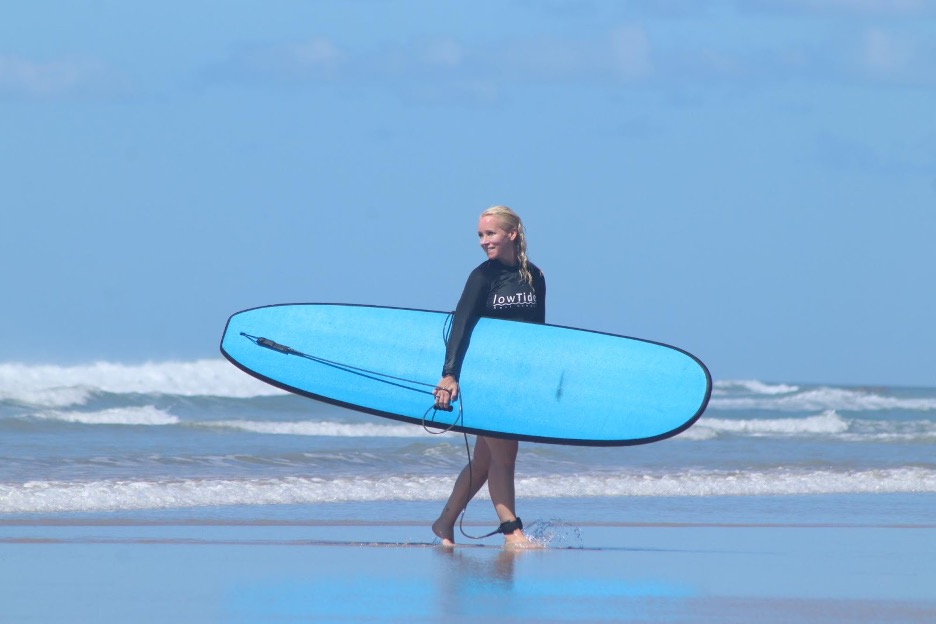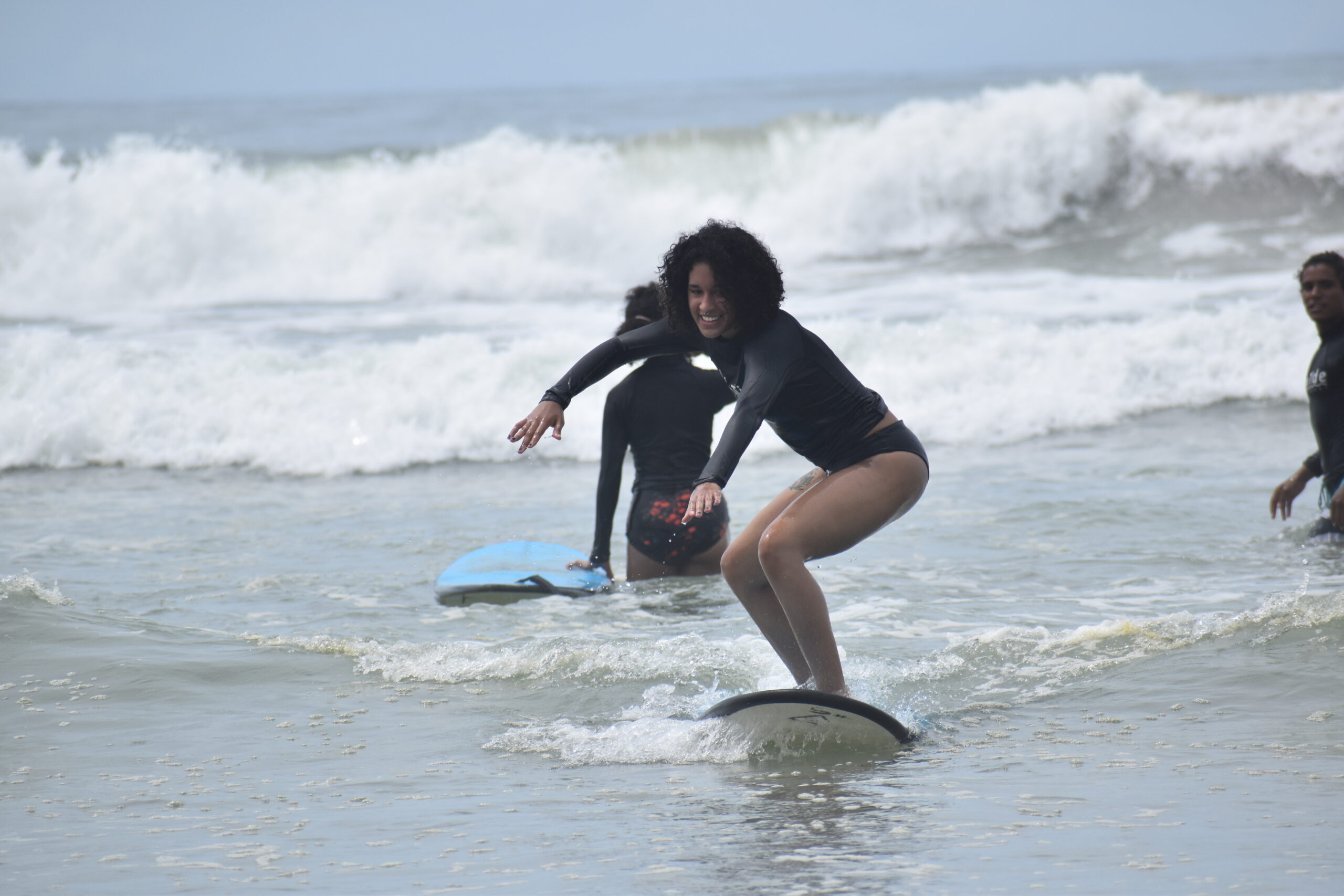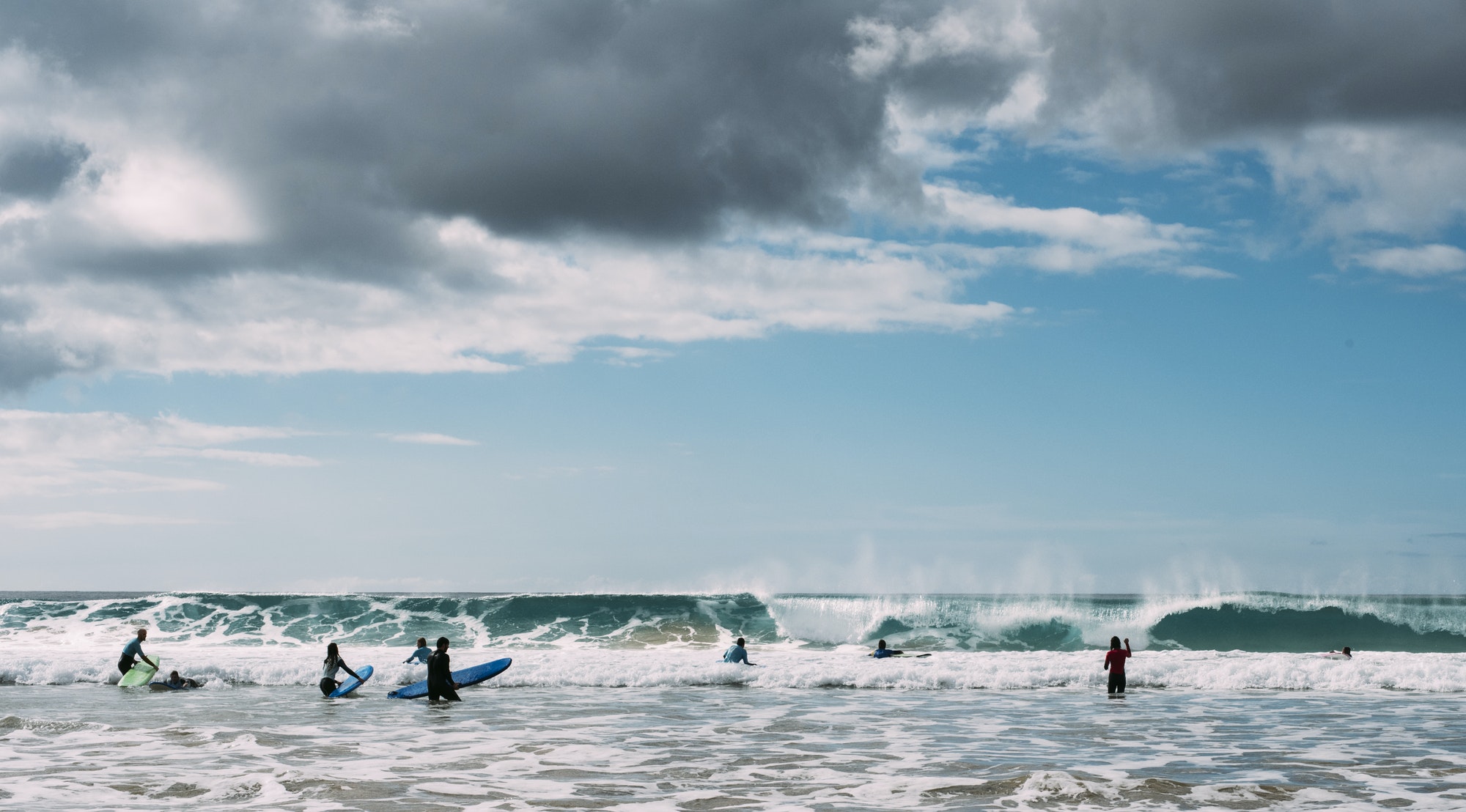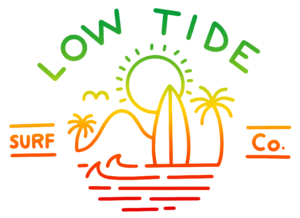North of the equator, summertime is near. And if you aren’t flying south, there is only one time-tested cure for the flat spell-inspired summertime blues likely to beset surfers on both coasts: buy a log.
Multifarious board rider Justin Quintal surfs just about everything well. Through his partnership with legendary Florida shaper Ricky Carroll, Quintal’s Black Rose MFG. has developed a whole suite of longboards that echo and modernize classic outlines from eras past. Over the years, the Florida boy has collected more than a handful of Duct Tape titles riding classic logs, while amassing a museum’s worth of boards built by a who’s-who of master craftsman, making him the ideal tipster to impart the wisdom necessary to pick out your first longboard.
When I caught up with Quintal, he was in Saladita, Mexico preparing to compete in the Mexi Log Fest for the first time and defend his title at the Joel Tudor Duct Tape Invitational.
What should someone who doesn’t ride longboards look for in their first log?

There are a few magic numbers that I’ve always revolved my dimensions around with my longboards. I think the Model T is basically the best, most balanced longboard that’s been made. Joel [Tudor] developed it with Donald [Takayama] during a really cool time for longboarding. That board is 23 inches wide, 19 inches in the nose, and around 15.5 inches or 15.75 inches in the tail. There is nothing too dramatic about it. It has a little bit of rocker. The wide point is pretty much in the center. It’s just a really user-friendly, easy-to-ride board.
So, when you’re looking at dimensions for your first longboard, 23” is a really good width to start with. If you’re a bigger surfer, you can go a quarter to a half inch more. A smaller surfer can go a quarter- to a half-inch less.
Then, as far as lengths go, I think 9’6 is a good length – right in the middle. Then you can go up or down from there.
If you’re a beginning longboarder, a board with the wide-point in the middle is going to be easier to ride. You want something that’s kind of wide with a little width in the nose. That’s going to make for a more stable platform when you’re learning to cross-step and noseride.
If someone is like, “Hey, I want to surf a longboard like Alex Knost,” – a little more wiggly, or loose – I’d look for something a little narrower with the wide point pushed back.
It also depends where the surfer lives. If they’re from Florida like me, where the waves can be smaller and choppier and more unpredictable, I’m going to recommend something more like the Model T. If they want to surf a point, something thinner and narrower can work a little better.
What role do rails play in how longboards ride? What should someone be looking for in regard to rails?
Rails are important. In my opinion, Fifty-fifty rails are great for traditional longboarding – noseriding, cross-stepping, etc. That softer rail is really forgiving, and riding a longboard with classic style can really smooth out your surfing. But if somebody is looking for a longboard that they can still turn and that they can generate their own speed on, I’ll recommend a more sixty-forty rail. More turned-down rails with more edge toward the tail will help track and grip.
And how about bottom contours?
The bottom can have a lot to do with how the board rides, as well. If you’re looking to do more turns, more dramatic “V” out the back can be helpful. Something that is flatter is going to go faster and be a little more forgiving. Most logs, even if they are generally flat on the bottom, are going to have a little roll toward the rails just from rounding out those fifty-fifty rails. It gives it the illusion that there is some belly or convex. I think flatter is better for a beginner, but I personally like a little bit of belly in my boards. It slows it down and makes for a stable, smooth ride, even when it’s choppy. I recommend playing around with the belly, the more experienced you get. It took me a while to figure it out, but now I love it. A good visual is turning on the faucet and holding a spoon upside down underneath it. You’ll see the convex will suck the spoon to the water and then the water runs off the sides.
I also like a little bit of nose concave. That allows the board to continue down the line when you’re noseriding. If you have too much belly, or it’s too flat underneath the nose, you’ll tend to get sucked out of the back of the waves when you’re noseriding.
For people trying to transition from shortboarding to logging, does a smaller longboard tend to make that transition easier?
I tell people if you’re going to go with a longboard, just get an actual longboard. I say 9’6 because that’s a pretty standard length, but I tend to ride logs that are not under 9’9 or 9’10. I really like the bigger boards because that’s when you get that glide factor where you’re covering a lot of water without a lot of effort. If you’re on a 9’0 or 9’1 or 9’2, it’ll feel like a lot more foam than you’re shortboard, but you aren’t really tapping into that longboard feel. I try to push people to go a little longer.

Is weight something people should be conscious of?
Definitely. Obviously, the lighter the board, the more responsive it’ll be. But if you go too light, again, you’re kind of defeating the purpose of having a longboard to begin with. My noseriders tend to weigh around 28 lbs. That’s probably too heavy for most people. I’d recommend 15, 16, or 17 lbs. as a good place to start.
What should people know about fins?
If you’re going for a full noserider, I’d recommend a pivot fin – one that’s more upright with a lot of surface area – pushed all the way back in the fin box. With a pivot fin, you’re going to do a lot more snappy, pivot-y turns.
If someone is looking for something they can turn a little bit more, or they want to loosen up their noserider, I recommend the Greenough 4-A style fin. The 4-A is the most well-balanced longboard fin, hands down. It has extra base and holds really well on the nose, but it has that extra rake so when you get back on the tail you can do more drawn-out turns.
There are lot of little tricks or novelty design elements with longboards – from deep concave under the nose to concave on top of the tail to let water push it down when you’re noseriding. Are there things that people should avoid or be wary of?
One thing I see a lot of people wanting is that [David] Nuuhiwa, Bing-style deep concave underneath the board. You can’t take anything away from Nuuhiwa – he’s a legend and one of the best noseriders of all time. Obviously those boards worked, but they were just figuring it out. I don’t think it needed to be that deep. That would be something to look out for. Don’t trip too hard if you can’t eat cereal out of the nose.
One thing I’ve been doing a lot is having a little flat spot under the nose, or just subtle concave. I’ve been feeling like I get more lift out of that. It forces you to noseride in more proper noseride sections. It feels really stable. Even if you look at some of Joel’s boards – like one I saw he did with Nathan Strom – it has that flat spot under the nose, no concave really.

Any tips for how to ease into riding waves properly on a log?
First of all, I’d say don’t even put a leash plug in there. If you need a leash, you probably shouldn’t be riding your longboard that day. Not having a leash forces you to be more conscious of what you’re doing and eventually not fall as much. You should be more aware of your surroundings when you’re riding a log. Don’t think it’s all gravy and you’re cool because you don’t have a leash on. It’s a big heavy thing that, if you lose it, can hurt somebody. Also realize just because you can catch more waves doesn’t mean you should take every wave from guys on shortboards. Be aware of your surroundings, be respectful, and have fun.
As far as riding goes, one thing my dad told me when I was younger was, “Just catch a few and stand there.” I’d say don’t try to do any crazy turns or cross-step right away. Just go as far as you can. Feel the board out. Feel how it responds to the wave. From there, I’d say take your time and take baby steps. Longboarding is going to smooth out your style. It’s supposed to be a different kind of trip. You’re not trying to pump or haul ass. Just relax. Settle into it. You’re gonna pearl and blow a few sections, but just have fun. Oh, and watch The Seedling and Sprout.

